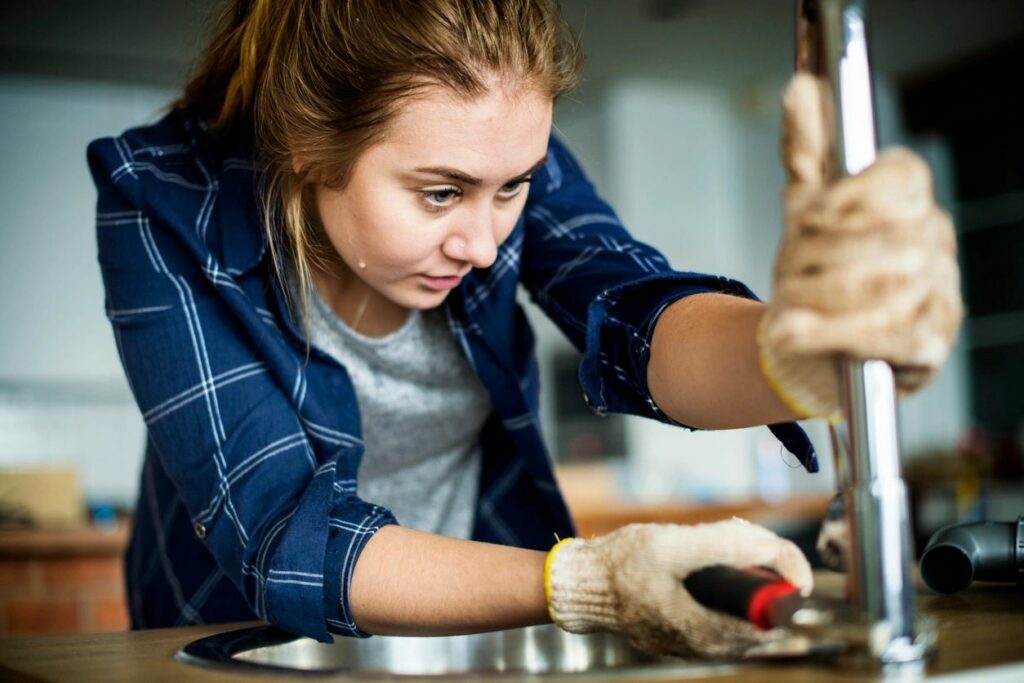They are making a few good pointers on What Causes Leaky Faucets & How To Fix Them overall in the content which follows.

Dripping faucets could appear like a minor aggravation, however their influence surpasses simply the inconvenience of the audio. From drainage to incurring unnecessary monetary expenses and health and wellness dangers, neglecting a trickling tap can cause numerous consequences. In this article, we'll look into why it's essential to address this typical family problem immediately and efficiently.
Wastage of Water
Ecological Effect
Leaking taps add significantly to water waste. According to the Epa (EPA), a solitary faucet trickling at one drip per secondly can waste more than 3,000 gallons of water per year. This not only stress water resources however additionally influences ecological communities and wildlife depending on them.
Financial Prices
Boosted Water Expenses
Beyond the environmental effect, leaking faucets can inflate water costs significantly. The gathered wastage over time converts into greater utility expenses, which can have been stayed clear of with prompt fixings.
Possible Property Damage
Additionally, long term trickling can lead to damage to fixtures and surfaces surrounding the faucet. Water build-up can trigger discoloration, corrosion, and even structural concerns if left unattended, causing extra repair service expenses.
Health and wellness Problems
Mold and Mold Growth
The constant visibility of moisture from a dripping tap creates a suitable setting for mold and mildew and mold growth. These fungis not just compromise interior air quality yet also position wellness threats, specifically for individuals with respiratory problems or allergic reactions.
Waterborne Diseases
Stationary water in trickling faucets can become a breeding place for germs and various other microorganisms, increasing the threat of waterborne diseases. Pollutants such as Legionella bacteria flourish in stagnant water, potentially bring about major diseases when consumed or inhaled.
Do it yourself vs. Expert Repair work
Pros and Cons of DIY Repair Service
While some might attempt to take care of a dripping tap themselves, DIY repairs include their own set of difficulties. Without correct understanding and devices, DIY attempts can exacerbate the concern or lead to insufficient repair work, extending the problem.
Advantages of Employing a Professional Plumber
Hiring a professional plumber ensures that the underlying source of the trickling tap is dealt with successfully. Plumbers possess the expertise and devices to identify and repair faucet problems effectively, conserving time and reducing the threat of further damage.
Step-by-Step Guide to Taking Care Of a Dripping Tap
Tools Required
Prior to trying to take care of a leaking faucet, collect the required tools, consisting of a flexible wrench, screwdrivers, substitute components (such as washers or cartridges), and plumber's tape.
Typical Faucet Issues and Their Solutions
Determine the type of tap and the certain concern causing the drip. Common troubles consist of worn-out washing machines, rusty valve seats, or defective O-rings. Refer to producer directions or on the internet tutorials for detailed assistance on repair work.
Safety nets
Normal Maintenance Tips
To prevent dripping taps, perform routine maintenance such as cleansing aerators, inspecting for leakages, and changing worn-out components without delay. In addition, think about installing water-saving gadgets or upgrading to extra efficient fixtures.
Importance of Prompt Services
Attending to dripping faucets as quickly as they're seen prevents additional water wastefulness and potential damage, ultimately conserving both water and cash in the long run.
Impact on Residential Property Worth
Perception of Well-Maintained Property
Keeping a residential property in good condition, including dealing with maintenance problems like trickling faucets, boosts its viewed value and charm amongst possible purchasers or occupants.
Influence on Resale Value
Residences with properly maintained plumbing components, consisting of faucets, command greater resale values in the real estate market. Addressing leaking faucets can add to a positive impact during residential property evaluations and arrangements.
Environmental Obligation
Individual Contribution to Preservation
Taking duty for repairing trickling faucets aligns with broader efforts toward water preservation and ecological sustainability. Every person's activities jointly make a considerable influence on preserving precious resources.
Lasting Living Practices
By prioritizing prompt repairs and embracing water-saving behaviors, individuals add to lasting living practices that benefit both present and future generations.
Conclusion
Dealing with a dripping tap exceeds plain comfort; it's a crucial action toward saving water, decreasing economic expenses, and securing health and wellness and building. Whether through DIY fixings or expert assistance, acting to fix leaking taps is a tiny yet impactful way to promote accountable stewardship of sources and add to a healthier, much more sustainable future.
Why Are My Faucets Dripping (And Can I Fix it Myself)?
Causes of a Dripping or Leaking Faucet
Whether you’re hearing drops of water falling and hitting a sink, or noticing water ooze out from the base of the spout, you shouldn’t ignore a dripping or leaking faucet. And, the good news is, sometimes you can fix the problem yourself.
In this article, we’ll review a few common causes of dripping and leaky. We’ll also walk you through some basic ways to find the problem and handle it without calling anyone — and let you know when to call in a pro.
But, no matter what the cause, or whether you can handle it on your own, the sooner you address it, the better.
Each drip may be a tiny amount of water. But, they all add up quickly. According to the U.S. Geological Survey, one faucet losing one drop every 20 seconds — five a minute — wastes around a liter of water every day, and 173 gallons a year.
Add in more than one in your house, and it’s a lot of water to waste. So, we’ll help you get to the bottom of things quickly.
Four Reasons Your Faucet May Be Dripping
Aerator is Damaged or Unseated Valve Seat is Corroded O Ring is Loose or Worn Out Part of the Assembly is Loose Aerator is Damaged or Unseated
If you unscrew the end of your faucet, you’ll find the aerator. It’s the little stem piece with a screen on it that shuts off the water circulation.
If it’s damaged, or if it’s not sitting right, it will allow water to pass through.
Valve Seat is Corroded
Next is the valve seat, which is connected to the washer. If the washer wasn’t in place correctly, then it could have ground against the seat. Over time, this damages the valve seat.
The problem could also be corrosion: Over time, the part has worn out, and it’s now allowing water to pass through.
O Ring is Loose or Worn Out
Since the o ring is only a small rubber gasket, it’s a common reason why the faucet is dripping. You’ll find it at the base of the faucet, and it’s there to keep water from coming out where it’s not supposed to.
However, it’s common for the o ring to wear out over time. When it does, you’ll notice a drip.
Part of the Assembly is Loose
So far, we’ve looked at a few small, specific parts. But, the problem could be anywhere in the assembly if something’s out of place.
Even if a part isn’t damaged, over time, it may have become loose or dislodged. It could be the parts we mentioned, or the aerator at the tip of the faucet, the stem itself,
Can I Fix a Leaky Faucet Myself?
Depending on the problem, and how handy you are, there’s a chance you can fix a leaky faucet without calling a professional. But, you do run the risk of making the problem worse.
If it’s a small drip, you can certainly try a few troubleshooting tactics. We’ll walk you through them in a moment.
But, no matter what, your first step should be shutting off the water coming into the faucet. You should find a shutoff valve under the sink on the pipes leading to it. Turn each one clockwise until they close tightly.
Next, make sure you have the right tools for whatever you’re attempting. It’s tempting to make do with what you have. But, you need the right ones for a reason: You’re often dealing with small parts that can break if you handle them carelessly.
If you’re feeling confident, here are some places to start.
Items Near the Tip of the Faucet
A few of the parts we mentioned — particularly the valve seat and washer — are located at the tip of the faucet where the water comes out. They’re easy to access, making it a good place to start.
Check the O Ring
To check the o ring, you’ll need to take off the spout at the base. It’s easiest on kitchen sinks with long spouts, versus the smaller, bulkier base on most bathroom sinks.
Either way, this can be tricky, so do it carefully and don’t force anything. If it’s not coming right off, you’re much better off calling in a pro than possibly breaking something.
For a kitchen sink, there’s usually a nut or coupling assembly at the base of the spout. These often slide off easily without using any tools.
Once you’ve disassembled those parts, gently but forcefully twist off the spout.
Then, you can see the o rings. There should be two of the rubber gaskets on the base. If they look worn or damaged, replace them, and see if that solves the problem.

I came across that blog entry about Should I Repair or Replace a Leaky Faucet? when doing a search on the web. Enjoyed our posting? Please quickly share it. Let others locate it. I love your readership.